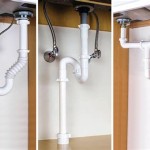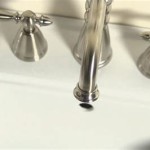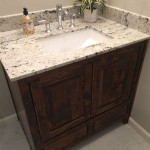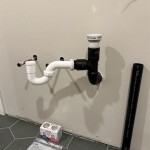How Much Does A Heated Bathroom Floor Cost?
Heated bathroom floors offer a luxurious and comfortable experience, particularly during colder months. The appeal of stepping onto a warm floor instead of a cold tile surface is considerable. However, understanding the costs associated with installing and operating such a system is essential for informed decision-making. The overall cost can vary significantly based on several factors, including the size of the bathroom, the type of heating system chosen, the complexity of the installation, and local labor rates. This article will delve into the various aspects of heated bathroom floor costs, providing a comprehensive overview to assist in budgeting and planning.
The primary component of the cost is the heating system itself. There are two main types of heated bathroom floor systems: electric radiant floor heating and hydronic radiant floor heating. Each system has its own set of cost considerations, installation procedures, and operational characteristics. Choosing the right system depends on individual needs, budget constraints, and the existing infrastructure of the home.
Electric radiant floor heating systems are typically more affordable to install than hydronic systems, especially for smaller bathrooms. These systems utilize electric heating cables or mats embedded within the flooring. When electricity passes through these cables, they generate heat, warming the floor surface. The cost of electric systems is primarily influenced by the square footage of the area to be heated, the type of heating mat or cable used, and the thermostat selected.
Hydronic radiant floor heating systems, on the other hand, use hot water circulated through pipes embedded in the flooring. A boiler or water heater heats the water, and a pump circulates it through the network of pipes. While the initial installation cost of a hydronic system is typically higher than that of an electric system, the long-term operating costs can be lower, particularly if the water heater is powered by natural gas or another relatively inexpensive fuel source.
Cost of Electric Radiant Floor Heating
The cost of an electric radiant floor heating system is largely determined by the coverage area. Heating mats and cables are sold by the square foot, with prices ranging from approximately $8 to $20 per square foot. This price generally includes the heating element itself. However, it's important to note that this is just the cost of the material. Installation costs are separate and are a significant component of the overall expense.
The type of heating mat or cable can also impact the price. Some mats are pre-spaced and easier to install, while others require more intricate placement. Self-leveling underlayment is often recommended to create a smooth, even surface for the heating elements, adding to the material cost. The cost of the thermostat also needs to be considered. A basic thermostat can cost around $50, while programmable thermostats with advanced features like Wi-Fi connectivity and energy monitoring can cost upwards of $200.
Installation costs for electric radiant floor heating typically range from $5 to $15 per square foot, depending on the complexity of the project and the labor rates in the area. This cost includes the labor involved in preparing the subfloor, installing the heating mats or cables, wiring the system to the thermostat, and testing the system to ensure it is functioning correctly. Total material and installation costs for an electric heated bathroom floor typically range from $13 to $35 per square foot.
For example, a small bathroom of 40 square feet could cost between $520 and $1400 for the materials alone. Adding installation costs of $200 to $600 could bring the total project cost to between $720 and $2000. These figures are estimates and can vary based on the specific choices made in terms of materials and labor.
Cost of Hydronic Radiant Floor Heating
Hydronic radiant floor heating systems are typically more expensive to install than electric systems, particularly for smaller bathrooms. The initial investment includes the cost of the piping, manifolds, pumps, and a heat source, such as a boiler or water heater. If a new boiler or water heater is required, this can significantly increase the overall project cost. Existing heating systems can sometimes be adapted to provide hot water for the radiant floor heating, but this may require modifications and additional components.
The cost of the piping used in a hydronic system varies depending on the type of material and the diameter of the pipe. PEX (cross-linked polyethylene) tubing is a common choice for radiant floor heating systems due to its flexibility, durability, and resistance to corrosion. The cost of PEX tubing typically ranges from $0.50 to $1.50 per foot. The manifold, which distributes hot water to the individual heating loops, can cost between $200 and $500, depending on the number of loops it supports.
A circulation pump is necessary to circulate the hot water through the piping. The cost of a pump typically ranges from $100 to $300. The heat source, whether it's a new boiler or an existing water heater, is a significant cost factor. A new boiler can cost several thousand dollars, while modifications to an existing water heater may cost several hundred dollars.
Installation costs for hydronic radiant floor heating are generally higher than those for electric systems due to the complexity of the installation. The labor involved includes preparing the subfloor, installing the piping, connecting the system to the heat source, and testing the system to ensure it is functioning correctly. Installation costs typically range from $8 to $25 per square foot. Total material and installation costs for a hydronic heated bathroom floor typically range from $20 to $50 per square foot, excluding the cost of a new boiler or water heater. Including a new boiler can easily double the overall cost.
For example, a small bathroom of 40 square feet could cost between $800 and $2000 for the materials and installation, excluding the heat source. Adding the cost of a new boiler, which could be $3000 to $6000, could bring the total project cost to between $3800 and $8000. As with electric systems, these figures are estimates and can vary based on the specific choices made in terms of materials and labor.
Additional Cost Considerations
Beyond the cost of the heating system and installation, there are several other factors that can influence the overall cost of a heated bathroom floor project. These include the type of flooring being installed, the need for subfloor modifications, and the cost of running electrical or plumbing lines.
The type of flooring chosen can have a significant impact on the cost. Tile is a popular choice for bathrooms due to its durability and water resistance, but it can be more expensive than other flooring options like vinyl or laminate. The cost of tile can range from $3 to $30 per square foot, depending on the material and design. Stone flooringoptions like marble or granite are even more expensive. The installation cost of the flooring also needs to be considered, which can range from $4 to $14 per square foot depending on the material and the complexity of the installation.
Subfloor modifications may be necessary to ensure that the flooring is level and stable. This can include repairing damaged areas, adding a layer of self-leveling underlayment, or reinforcing the subfloor to support the weight of the new flooring. The cost of subfloor modifications can vary depending on the extent of the work required, but it can add several hundred dollars to the overall project cost.
Running electrical or plumbing lines to the bathroom can also add to the cost. If the bathroom does not have adequate electrical capacity to support the heating system, a new circuit may need to be installed. This can cost several hundred dollars, depending on the distance from the electrical panel and the complexity of the wiring. Similarly, if the bathroom does not have adequate plumbing for a hydronic system, new plumbing lines may need to be installed. These costs can be mitigated by choosing a system or location that minimizes the need for extensive modifications.
Operating costs must also be considered. Electric systems will increase electricity bills, especially if used frequently. Hydronic systems may be more efficient in the long run, but the cost of fuel for the boiler or water heater should be factored in. Programmable thermostats can help to minimize energy consumption by automatically adjusting the temperature based on the time of day or occupancy. The cost of running a heated bathroom floor will vary based on the local energy prices, the size of the bathroom, and how frequently the system is used.
Finally, it is always advisable to obtain multiple quotes from qualified contractors before proceeding with a heated bathroom floor project. This will allow for comparison of prices and services, ensuring that the best value for the investment is obtained. Checking references and verifying licenses and insurance are also crucial steps in selecting a contractor. While DIY installation may seem appealing to save money, it’s best left to seasoned professionals who understand the intricacies involved in wiring electrical components and laying the material correctly.

How Much Does A Heated Bathroom Floor Cost In 2024

How Much Does A Heated Bathroom Floor Cost In 2024

How Much Does Radiant Floor Heating Cost 2024 Data Angi

Radiant Floor Heating Cost In 2024 Heated Floors

Heated Bathroom Floor Heating Cost Warmlyyours

Radiant Floor Heating Cost Per Square Foot Forbes Home

Floor Heating Design Inspiration Www Westsidetile Com

Is Radiant Floor Heating In A Bathroom Worth The Cost

How Much Does A Heated Floor Cost Centris Ca

Heated Bathroom Floors 4 Important Pros And Cons
Related Posts







